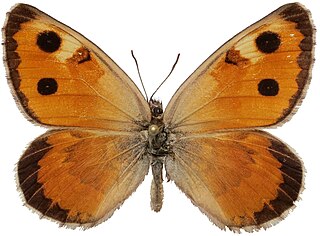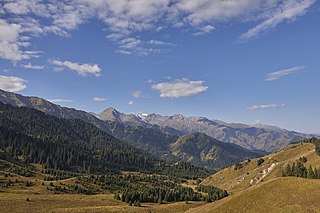
The Satyrini is one of the tribes of the subfamily Satyrinae. It includes about 2200 species and is therefore the largest tribe in the subfamily which comprises 2500 species.

Andrey Avinoff ; was an internationally-known artist, lepidopterist, museum director, professor, bibliophile and iconographer, who served as the director of the Carnegie Museum of Natural History in Pittsburgh from 1926 to 1945.

Lepidopterology is a branch of entomology concerning the scientific study of moths and the two superfamilies of butterflies. Someone who studies in this field is a lepidopterist or, archaically, an aurelian.

Karanasa leechi is a butterfly of the family Nymphalidae. It is found in Asia, including the Darvaz Range in the Pamirs and the Hindu Kush.

Karanasa modesta is a butterfly of the family Nymphalidae. It is found in India.
Karanasa moorei is a butterfly of the family Nymphalidae. It is found in north-western India and Afghanistan.

Kok Zhailau is a plateau in the Trans-Ili Alatau. It is located at an altitude of 1,450 m (4,760 ft) to 1,740 m (5,710 ft) between the Small and Big Almaty gorges, 10 km from the city of Almaty.






